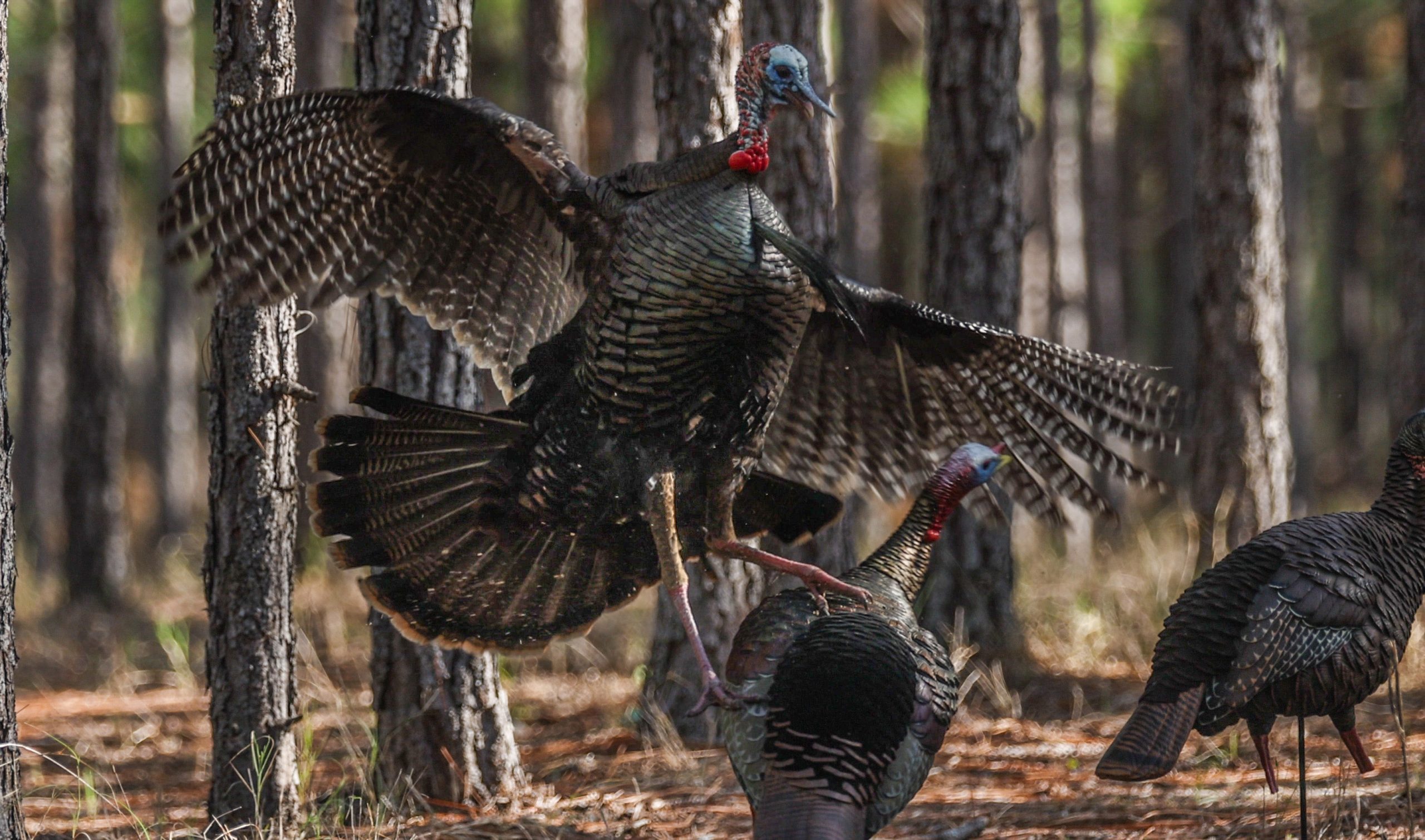Decoy Tactics For Spring Toms
As I drag my striker over the glass on my pot call letting out a few quick yelps hoping to attract the attention of the gobbler I roosted the evening before, I anticipate how the hunt would play out.
As he pitches down, he spots my hen decoy and can’t resist going into full strut. As he closes the distance to 20 yards, I apply pressure to the trigger of my shotgun. The hunt played out just as I anticipated. With proper decoy placement and the understanding of when and how to use decoys, you can pull more birds into close range.
Establishing Dominance
The first phase of the season is all about learning who the boss is. This is one of the few times I use a full strut tom decoy. During this phase of the season, toms are establishing the pecking order and the boss tom in the area will likely move in for a fight. This happens at the start of the season and only lasts a week or two. After the pecking order has been established, most toms will shy away from a full strut tom, especially if he has been on the losing end of a few fights.
Decoy placement for this phase is simple. I will place a full strut tom about 20 yards or so from where I set up and face him toward the direction I anticipate other toms will approach. I like to place three or four hens out there with him. You can also use a jake decoy if a full strut tom is not available. When a tom comes into this decoy setup, he will be looking for a fight. If you can take a shot prior to him attacking your decoy, I feel that is best. I know it’s fun to watch them attack a decoy but you could risk spooking him, or him damaging your decoy.
Searching for Hens
The second phase is all about the hens. After the pecking order has been established, toms and jakes will start to seek out hens. There are two different decoy tactics I like to use during this phase.
The first is a lone hen decoy out in the open where she can be seen from a distance. I like to use this tactic in an area I know there are turkeys but have none roosted from the evening before. This tactic is great if you don’t have access to multiple decoys.
The other tactic I like to employ during this part of the season is a small flock of hens in multiple positions. The more turkey decoys, the more visual appeal. For both tactics place your decoys both facing you about 25 yards out. The reason being is the toms will approach the hens head on, this gives you plenty of room for an easy shot.
Locked Down Toms
The third phase of the spring takes place when most of the hens are ready to be bred, and most toms will be locked down (or henned up) on a certain hen or group of hens. This phase ebbs and flows with the searching phase. A tom locked down can be almost impossible to harvest. The reason for this is he already has a hen, so a hen decoy doesn’t have the same appeal and a tom decoy just means competition. There is one decoy strategy that will work most of the time during this phase.
That tactic is the use of a jake decoy with a single hen. I like to place a hen in a laying-down posture with a jake right behind her about 15 yards in front of me. Any hen decoy will work but a hen laying down is the breeding position. If a tom sees this, he will want to investigate; the last thing he wants is a jake breeding before him. I like to face them away from me so that when the tom comes in, he is focused on them, keep in mind he may hang up and strut about 20 yards out trying to get the attention of the hen.
Back to Searching
This is the last phase of the season. As mentioned earlier, searching and locked down ebbs and flows. The reason I listed this as the last phase is as the breeding season ends, toms get desperate to find the last breeding hens. Most of the tactics in the searching and locked-down phases will continue to work, but there is another tactic I like to use.
This tactic involves the use of a full-strut decoy over a lay down hen. I will only do this if I know one of the most mature toms in the area is close. Most mature toms will come into this decoy setup; most other toms will shy away from it. If he’s not afraid of a fight and he’s not locked down with a hen, he will fight to breed the last of the hens. As he comes into your decoy spread, he will start to strut, giving you a shot opportunity.
Parting Shots
Buying the right decoys is just as important as how you use them. When shopping for decoys, there are a few things to keep in mind. First, buy the most realistic-looking decoys you can afford; remember turkeys have great vision. Second, decoys can be expensive so if you can only afford one decoy, buy a hen; they can be used in every phase of the season. Lastly, take care of your decoys. Make sure you store them properly and clean them up after each hunt.
Proper decoy placement can lead to some awesome hunts!
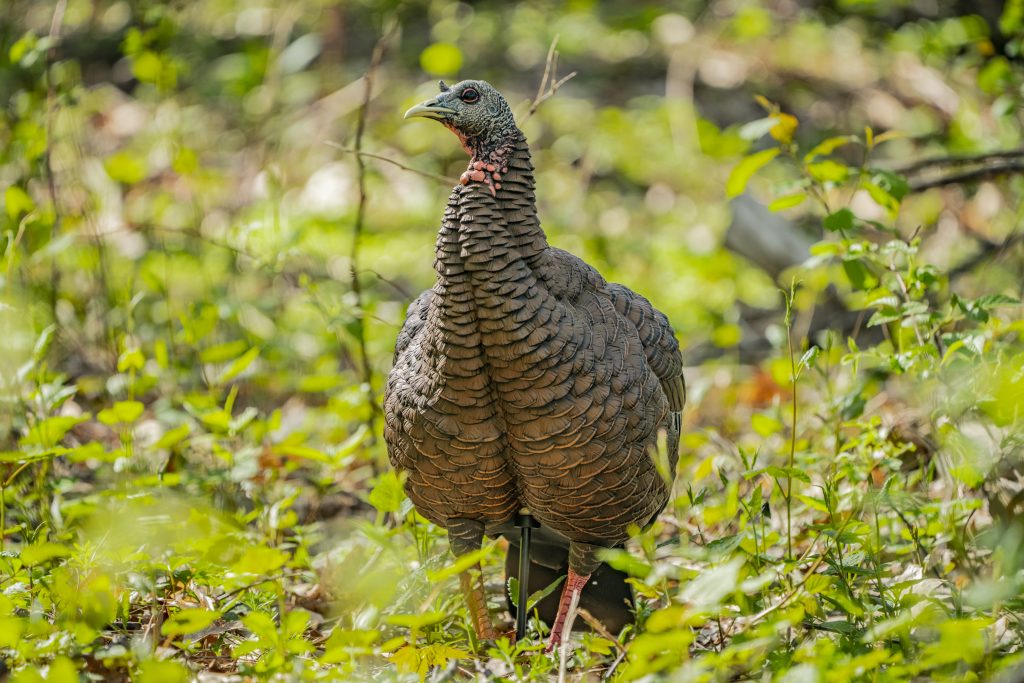
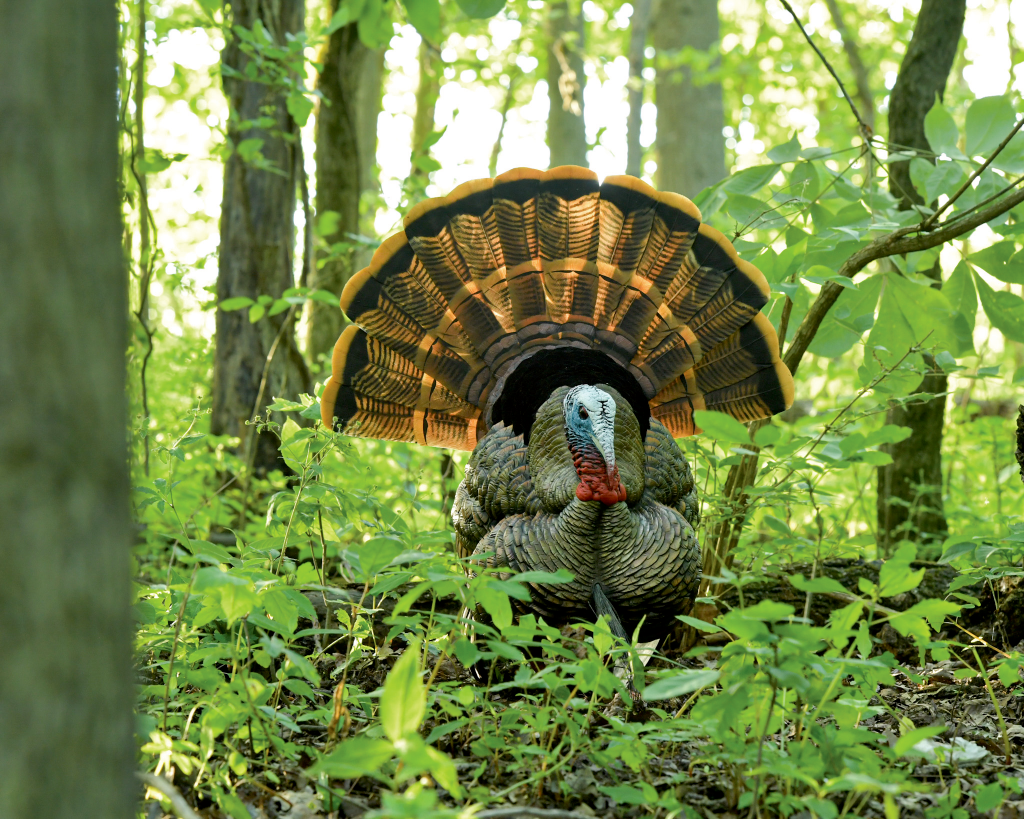
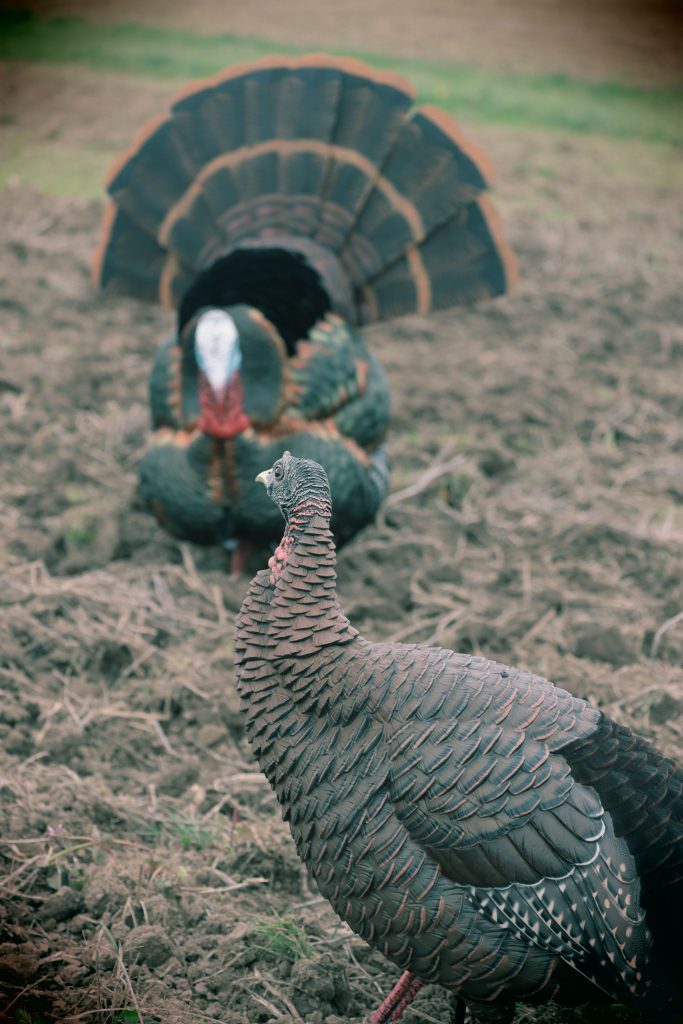
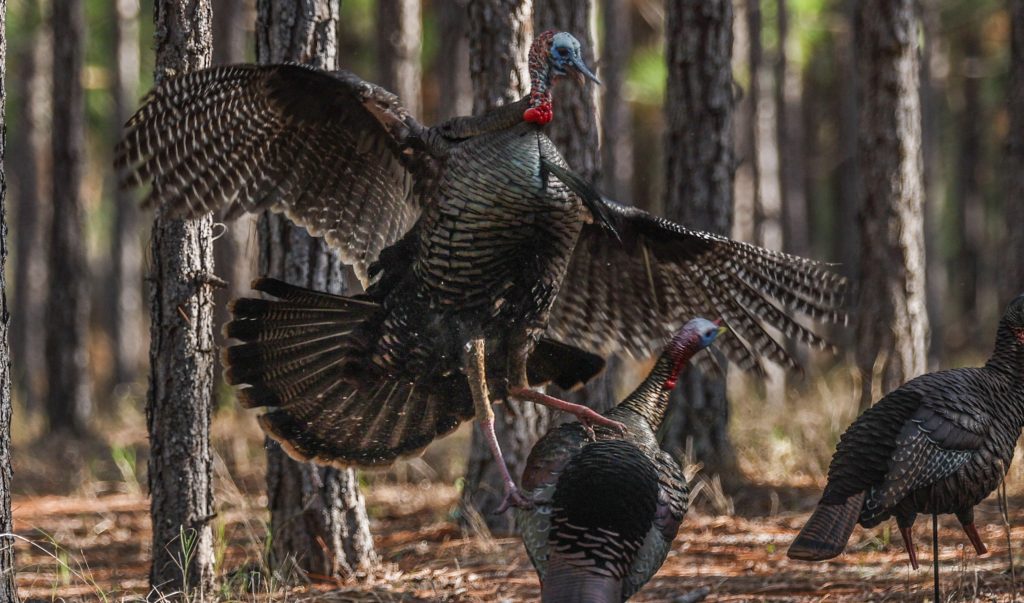
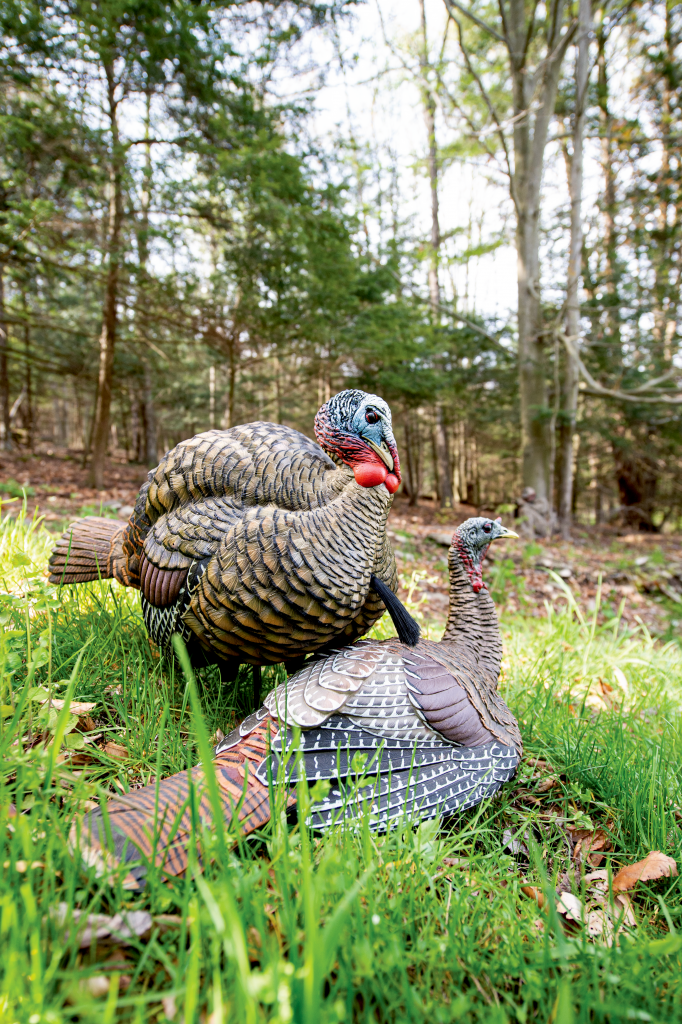
While decoys can increase your chances of harvesting a gobbler, they also increase the chances of danger while hunting. Today’s decoys are life-like and could draw fire from another hunter.
Be sure to:
- Check state turkey hunting regulations regarding the use of decoys while hunting. If using a mechanical decoy device, be sure to check the regulations as to its use.
- Never transport decoys uncovered. Make sure decoys are placed inside transportation bags or in your vest while moving through the turkey woods.
- Establish a clear line of vision for at least 100 yards when placing your decoys. Decoys should be placed 20 to 40 yards from your hunting position.
- Do not place decoys directly in front of you. Having the decoy directly in front of you will allow the gobbler to see you. Most importantly, if an unknown hunter comes in on your setup and shoots at one of the decoys, you would be in the direct line of fire.
- Place decoys to either the right or left of your position. Right-handed shooters are able to naturally swing to their left more easily, and vice versa for left-handed shooters.
- If you see another hunter stalking your decoys, do not wave your hands or make any movement. Call out in a loud voice to alert them of your presence. Keep decoys in plain view. Never place them in brush or cover.
